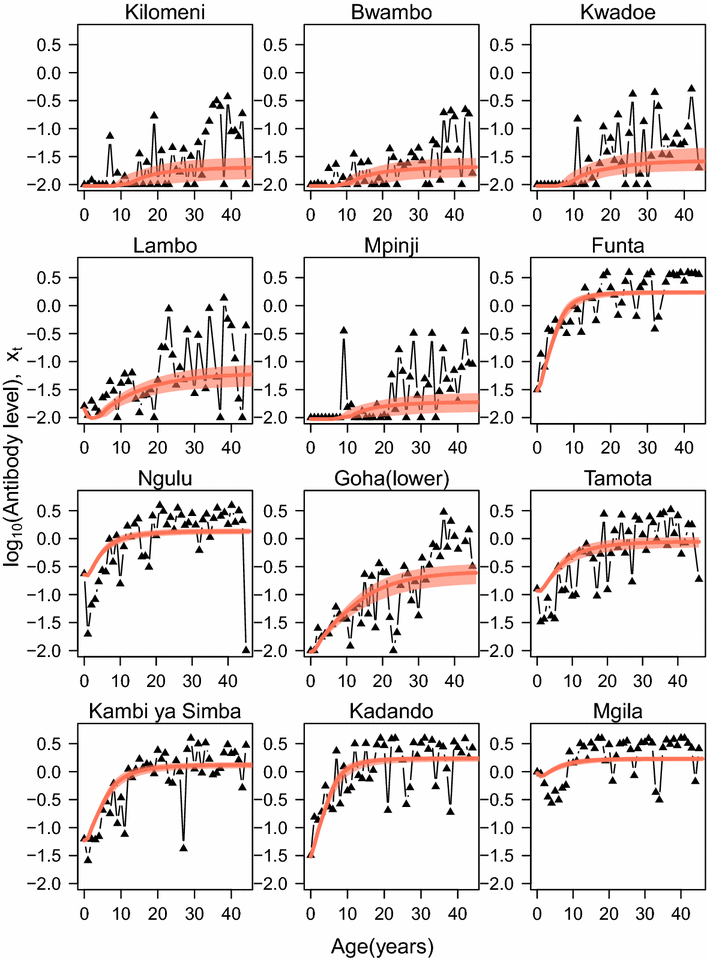Estimating malaria transmission intensity from Plasmodium falciparum serological data using antibody density models
- PMID: 26861862
- PMCID: PMC4748547
- DOI: 10.1186/s12936-016-1121-0
Estimating malaria transmission intensity from Plasmodium falciparum serological data using antibody density models
Abstract
Background: Serological data are increasingly being used to monitor malaria transmission intensity and have been demonstrated to be particularly useful in areas of low transmission where traditional measures such as EIR and parasite prevalence are limited. The seroconversion rate (SCR) is usually estimated using catalytic models in which the measured antibody levels are used to categorize individuals as seropositive or seronegative. One limitation of this approach is the requirement to impose a fixed cut-off to distinguish seropositive and negative individuals. Furthermore, the continuous variation in antibody levels is ignored thereby potentially reducing the precision of the estimate.
Methods: An age-specific density model which mimics antibody acquisition and loss was developed to make full use of the information provided by serological measures of antibody levels. This was fitted to blood-stage antibody density data from 12 villages at varying transmission intensity in Northern Tanzania to estimate the exposure rate as an alternative measure of transmission intensity.
Results: The results show a high correlation between the exposure rate estimates obtained and the estimated SCR obtained from a catalytic model (r = 0.95) and with two derived measures of EIR (r = 0.74 and r = 0.81). Estimates of exposure rate obtained with the density model were also more precise than those derived from catalytic models.
Conclusion: This approach, if validated across different epidemiological settings, could be a useful alternative framework for quantifying transmission intensity, which makes more complete use of serological data.
Figures





References
-
- WHO . World Malaria Report 2014. Geneva: World Health Organization; 2014.
-
- Malaria Indicators Surveys [http://www.malariasurveys.org].
-
- Voller A, Draper CC. Immunodiagnosis and sero-epidemiology of malaria. Br Med Bull. 1982;38:173–177. - PubMed
Publication types
MeSH terms
Substances
Grants and funding
LinkOut - more resources
Full Text Sources
Other Literature Sources

